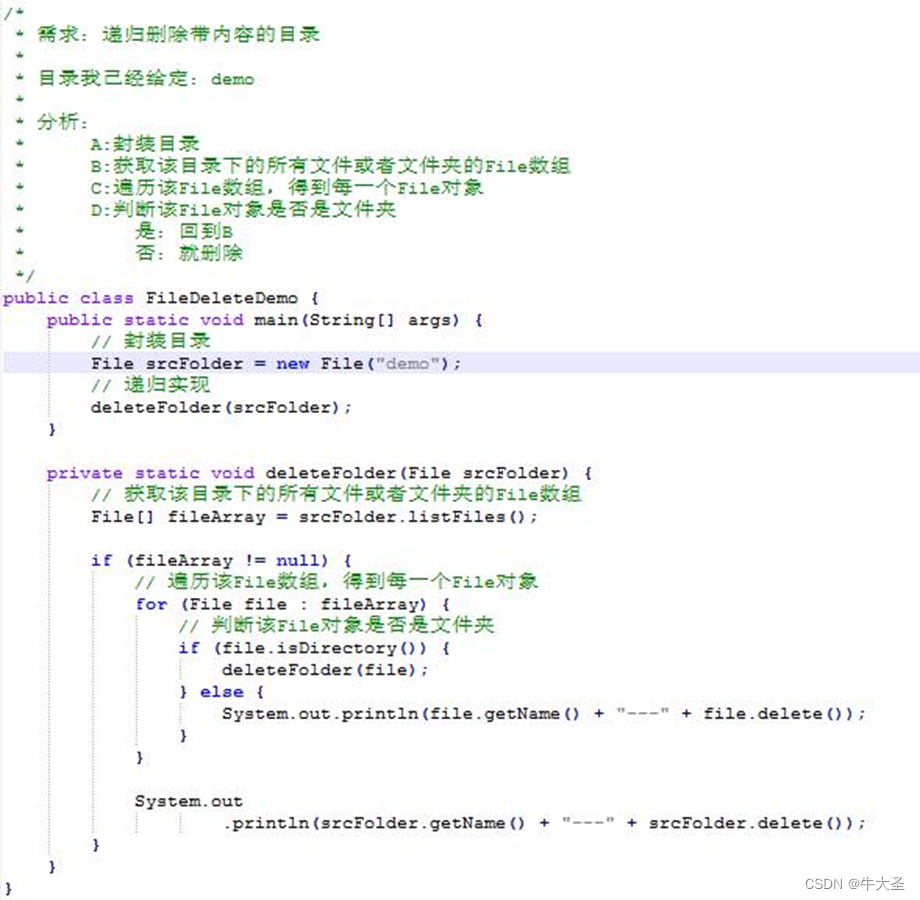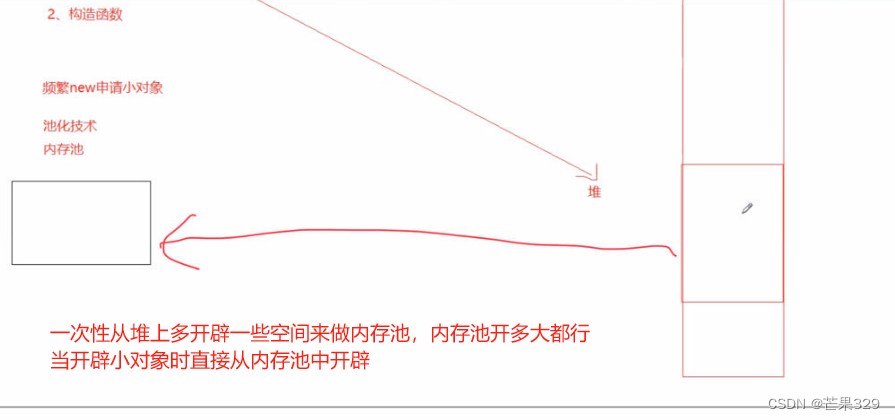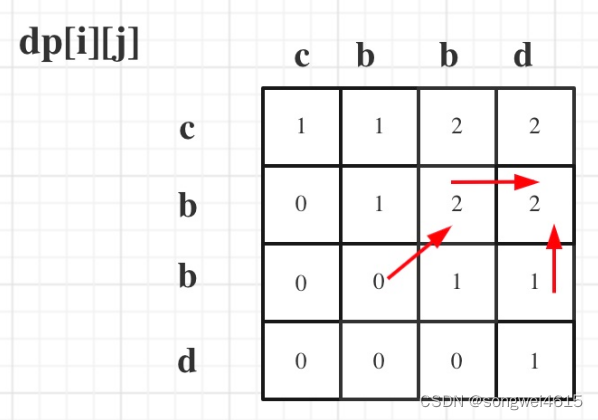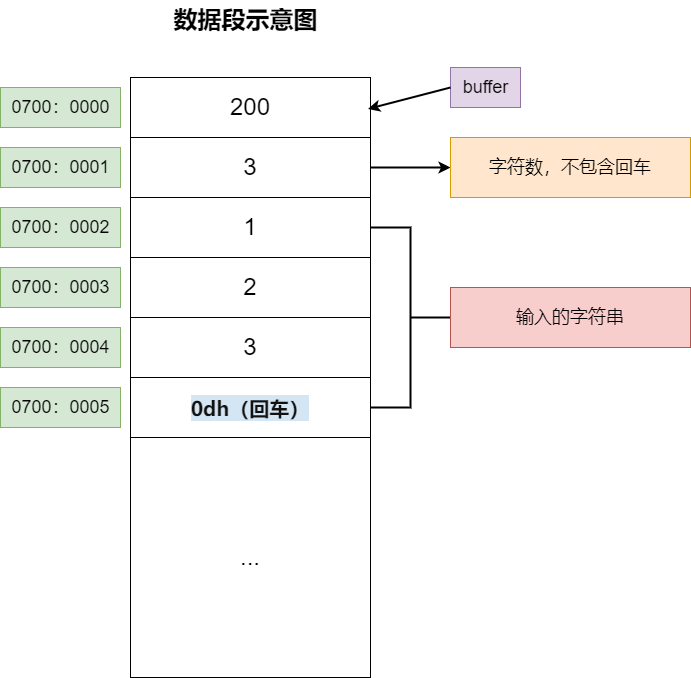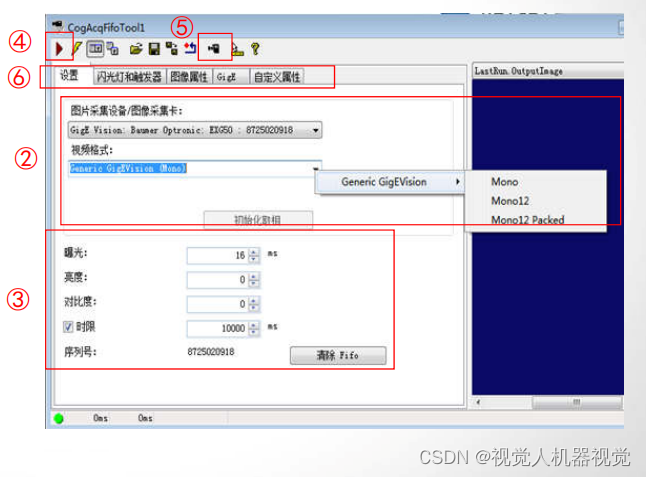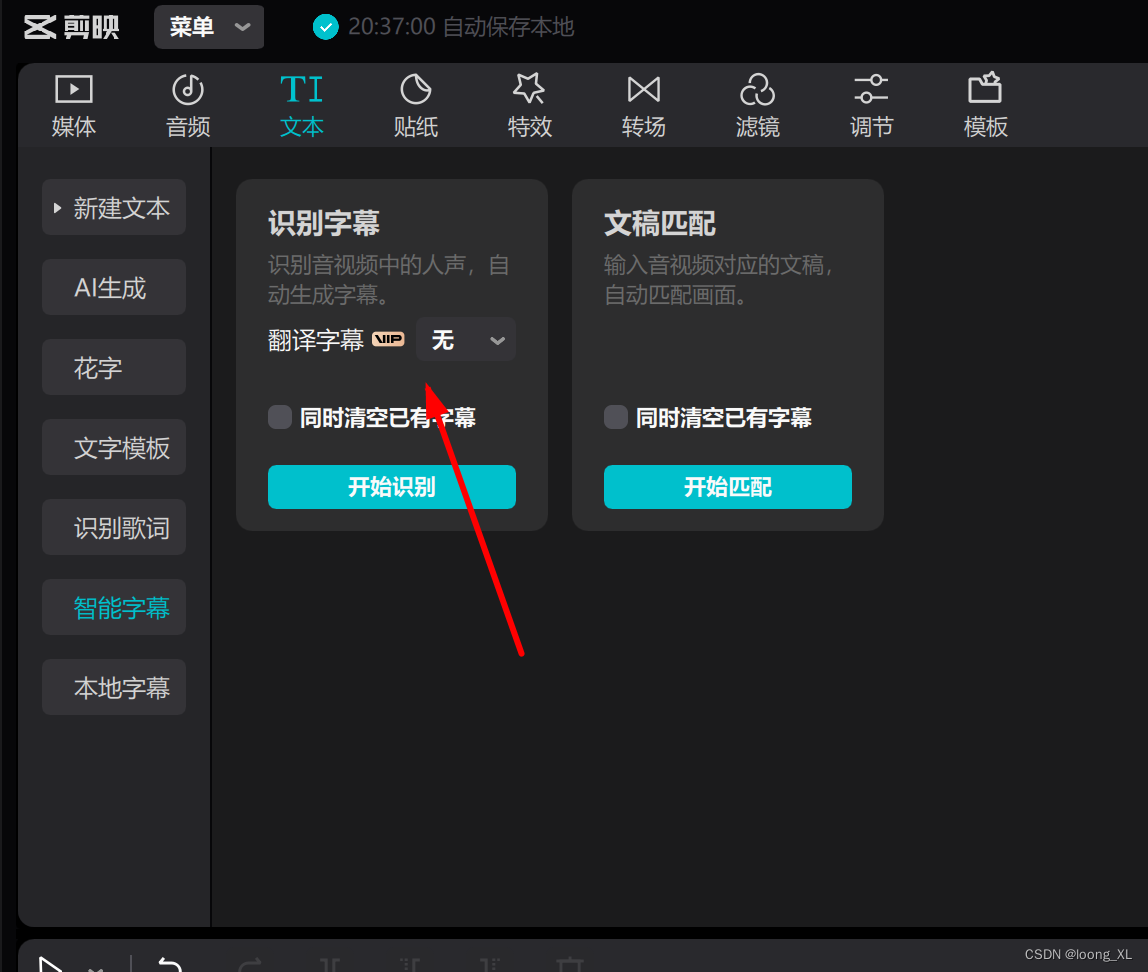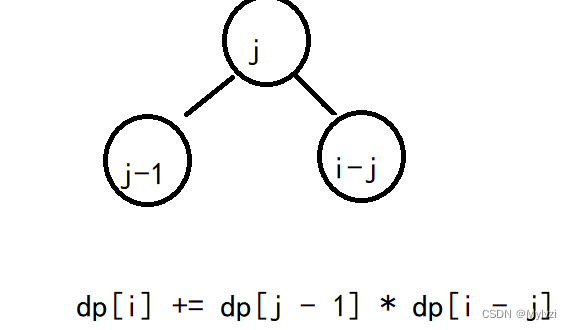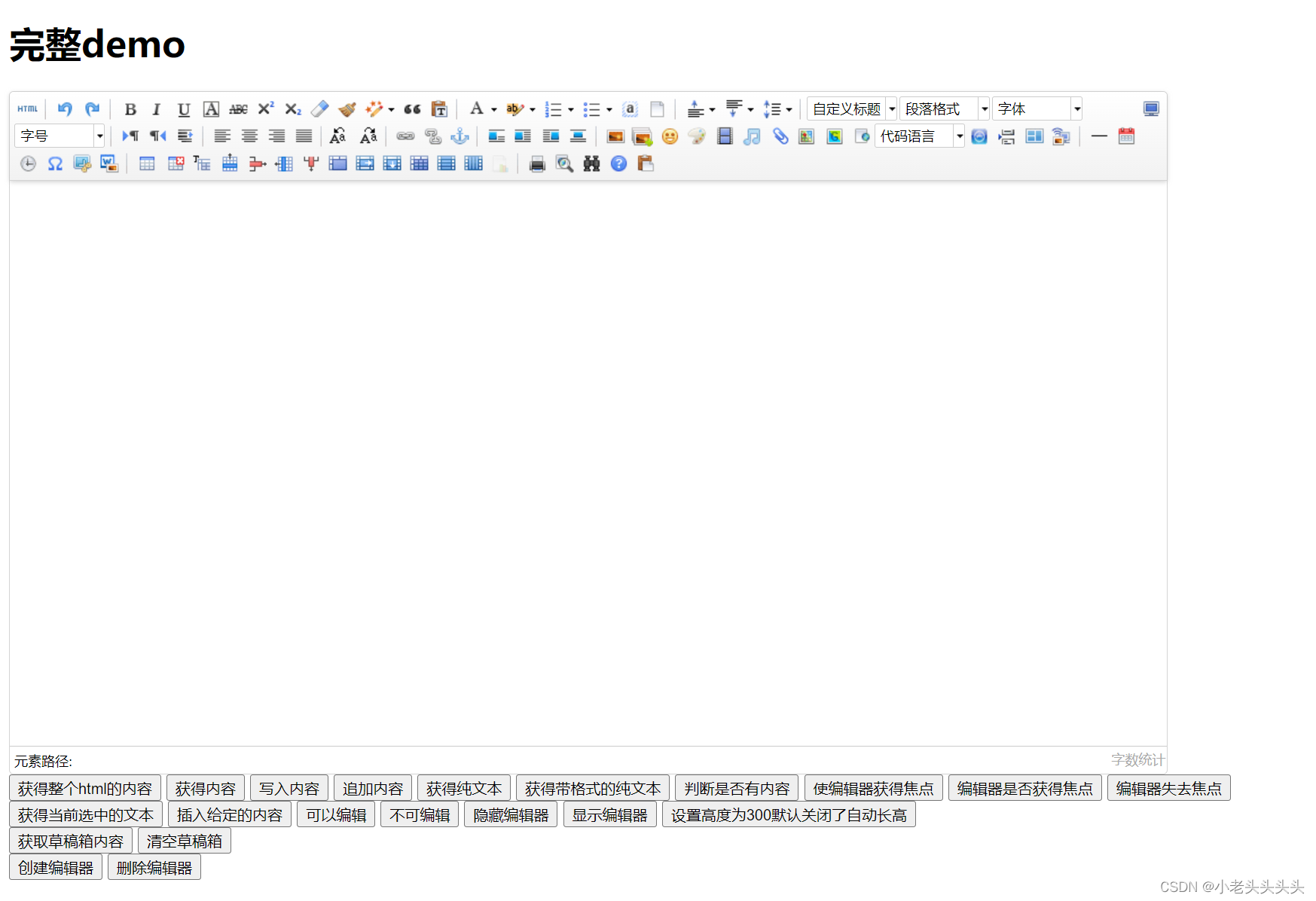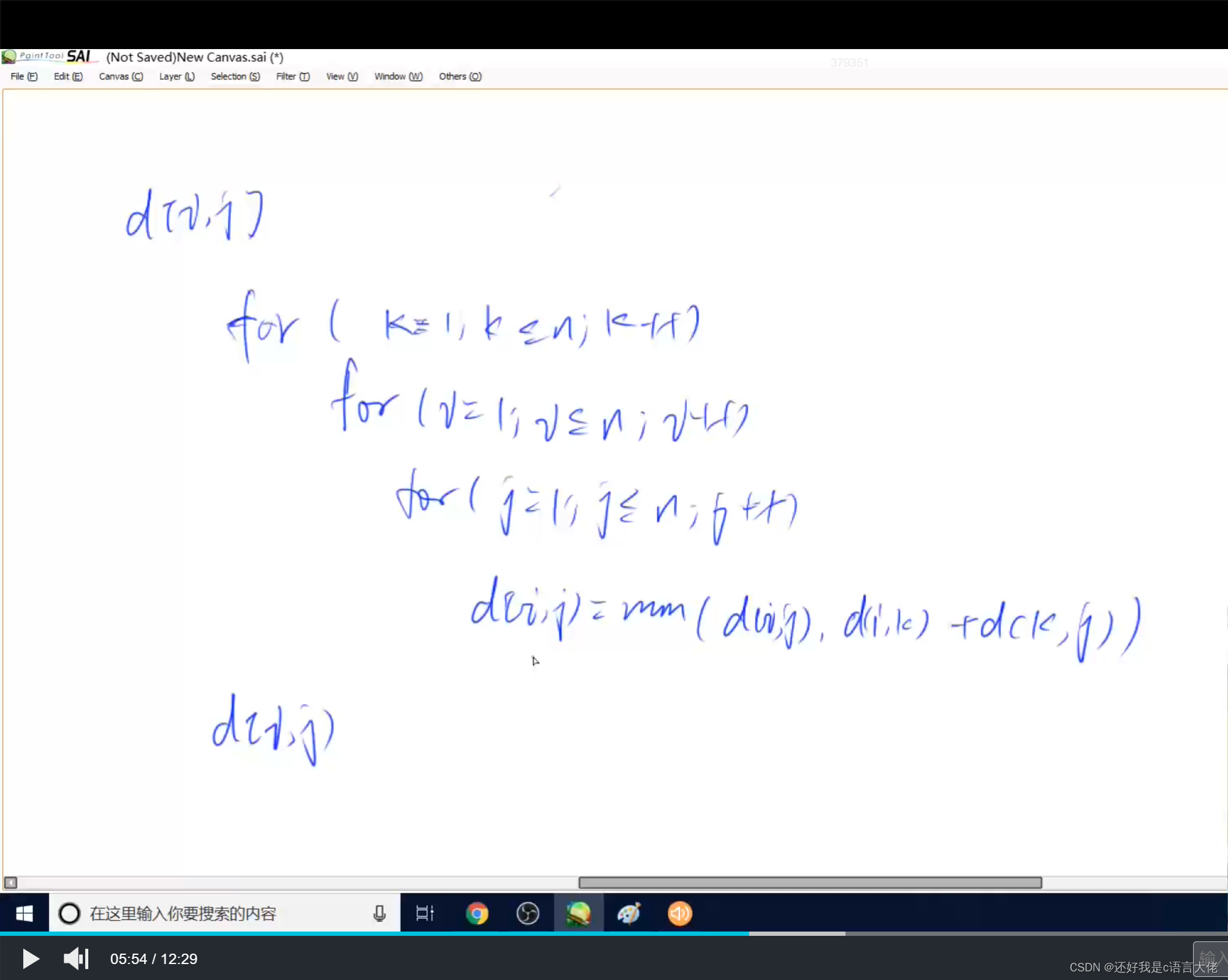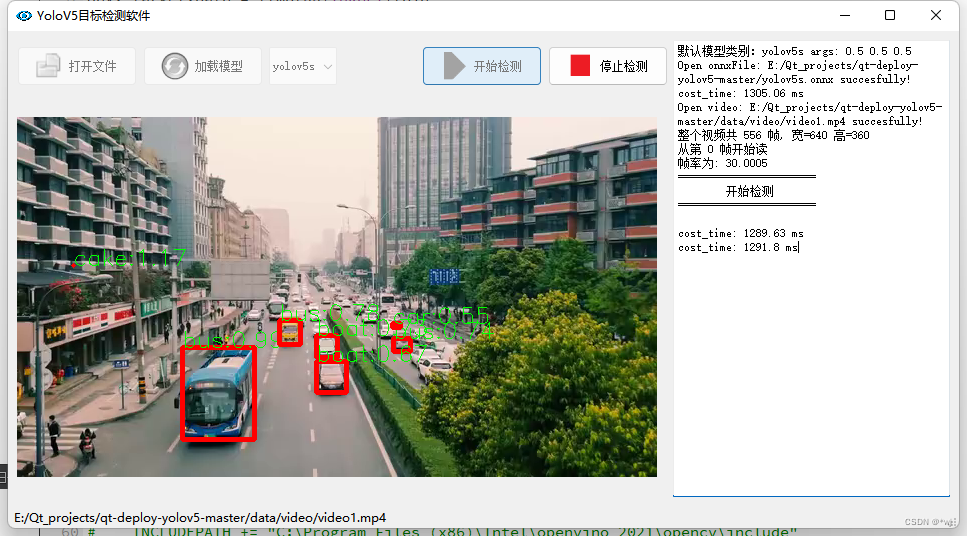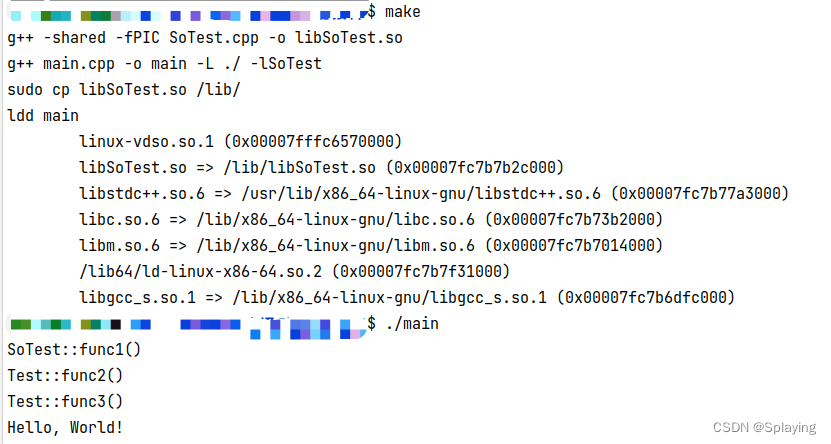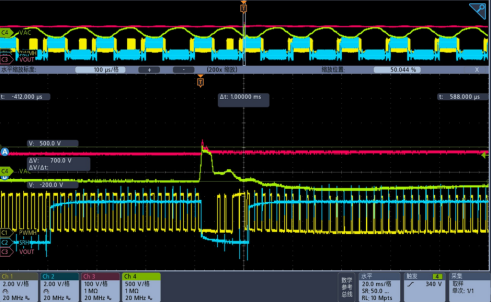IO流
IO流之数据流
在IO流中,可以通过DataInputStream和DataOutputStream字节流直接操作基本数据类型和字符串
- DataOutputStream
import java.io.*;//TODO 数据流,简单的说,就是容许字节流直接操作基本数据类型和字符串。
public class DataInputStream_DataOutputStream {public static void main(String[] args) throws IOException {String dataPath = "D:\\price.data";// 数据源DataOutputStream outputStream = null;try {//向文件中存数据//String[] rosterArray = { "张三", "李四", "王五", "薛六" }; double[] priceArray = { 5.2, 7.3, 1.5, 6.7, 8.0 };// 单价outputStream = new DataOutputStream(new BufferedOutputStream(new FileOutputStream(dataPath)));for (int i = 0; i < priceArray.length; i++) {
// 以与机器无关方式使用 UTF-8 修改版编码将一个字符串写入数据输出流。//outputStream.writeUTF(rosterArray[i]);outputStream.writeDouble(priceArray[i]); //字符变成字节存进去;System.out.println("单价为:"+outputStream.toString());}} finally {if(outputStream!=null){outputStream.close();}}DataInputStream inputStream = null;try {//从文件中读数据inputStream = new DataInputStream(new BufferedInputStream(new FileInputStream(dataPath)));while (true) {//String name = inputStream.readUTF();double price = inputStream.readDouble();//字节变成字符输出来System.out.println("单价为:"+price);}} catch (EOFException e) {System.out.println("数据读取完毕......");}finally {if(inputStream!=null){inputStream.close();}}}
}
IO流之打印流
Java.io.outputstream.PrintStream:
字节打印流,字符打印流
1:提供了更多的功能,比如打印方法。可以直接打印任意类型的数据。
2:它有一个自动刷新机制,创建该对象,指定参数,对于指定方法可以自动刷新。
3:它使用的本机默认的字符编码.
4:该流的print方法不抛出IOException。
该对象的构造函数。
PrintStream(File file) :创建具有指定文件且不带自动行刷新的新打印流。
PrintStream(File file, String csn) :创建具有指定文件名称和字符集且不带自动行刷新的新打印流。
PrintStream(OutputStream out) :创建新的打印流。
PrintStream(OutputStream out, boolean autoFlush) :创建新的打印流。
PrintStream(OutputStream out, boolean autoFlush, String encoding) :创建新的打印流。
PrintStream(String fileName) :创建具有指定文件名称且不带自动行刷新的新打印流。
PrintStream(String fileName, String csn)
PrintStream可以操作目的:
1:File对象。2:字符串路径。3:字节输出流。
前两个都JDK1.5版本才出现。而且在操作文本文件时,可指定字符编码了。
当目的是一个字节输出流时,如果使用的println方法,可以在printStream对象上加入一个true参数。这样对于println方法可以进行自动的刷新,而不是等待缓冲区满了再刷新。最终print方法都将具体的数据转成字符串,而且都对IO异常进行了内部处理。
既然操作的数据都转成了字符串,那么使用PrintWriter更好一些。因为PrintWrite是字符流的子类,可以直接操作字符数据,同时也可以指定具体的编码。
PrintWriter:具备了PrintStream的特点同时,还有自身特点:
该对象的目的地有四个:
1:File对象。
2:字符串路径。
3:字节输出流。
4:字符输出流。
开发时尽量使用PrintWriter。
方法中直接操作文件的第二参数是编码表。
直接操作输出流的,第二参数是自动刷新。
读取键盘录入将数据转成大写显示在控制台.
BufferedReader bufr = new BufferedReader(new InputStreamReader(System.in));//源:键盘输入
//目的:把数据写到文件中,还想自动刷新。设置true后自动刷新
PrintWriter out = new PrintWriter(new FileWriter("out.txt"),true);String line = null;
while((line=bufr.readLine())!=null){if("over".equals(line))break;out.println(line.toUpperCase());//转大写输出
}//注意:System.in,System.out这两个标准的输入输出流,在jvm启动时已经存在了。//随时可以使用。当jvm结束了,这两个流就结束了。但是,当使用了显示的close方法关闭时,这两个流在提前结束了。
out.close();
bufr.close();
复制文本文件
BufferedReader br = new BufferedReader(new FileReader("a.txt"));
PrintWriter pw = new PrintWriter(new FileWriter("b.txt"),true);
String line = null;
while((line=br.readLine())!=null) {pw.println(line);
}
pw.close();
br.close();


IO流之转换流
字节流操作中文数据不是特别的方便,所以就出现了转换流. 转换流的作用就是把字节流转换字符流来使用。
转换流特有功能:
转换流可以将字节转成字符,原因在于,将获取到的字节通过查编码表获取到指定对应字符。
转换流的最强功能就是基于 字节流 + 编码表 。没有转换,没有字符流。
发现转换流有一个子类就是操作文件的字符流对象:
InputStreamReader
|--FileReader
OutputStreamWriter
|--FileWrier
想要操作文本文件,必须要进行编码转换,而编码转换动作转换流都完成了。所以操作文件的流对象只要继承自转换流就可以读取一个字符了。
但是子类有一个局限性,就是子类中使用的编码是固定的,是本机默认的编码表,对于简体中文版的系统默认码表是GBK。
FileReader fr = new FileReader("a.txt");
InputStreamReader isr = new InputStreamReader(new FileInputStream("a.txt"),"gbk");
以上两句代码功能一致,
如果仅仅使用平台默认码表,就使用FileReader fr = new FileReader("a.txt"); //因为简化。
如果需要制定码表,必须用转换流。
转换流 = 字节流+编码表。
转换流的子类File = 字节流 + 默认编码表。
凡是操作设备上的文本数据,涉及编码转换,必须使用转换流。
InputStreamReader

OutputStreamWriter

IO流中的编码问题
A: OutputStreamWriter
OutputStreamWriter(OutputStream os):默认编码,GBK
OutputStreamWriter(OutputStream os,String charsetName):指定编码。

B: InputStreamReader
InputStreamReader(InputStream is):默认编码,GBK
InputStreamReader(InputStream is,String charsetName):指定编码
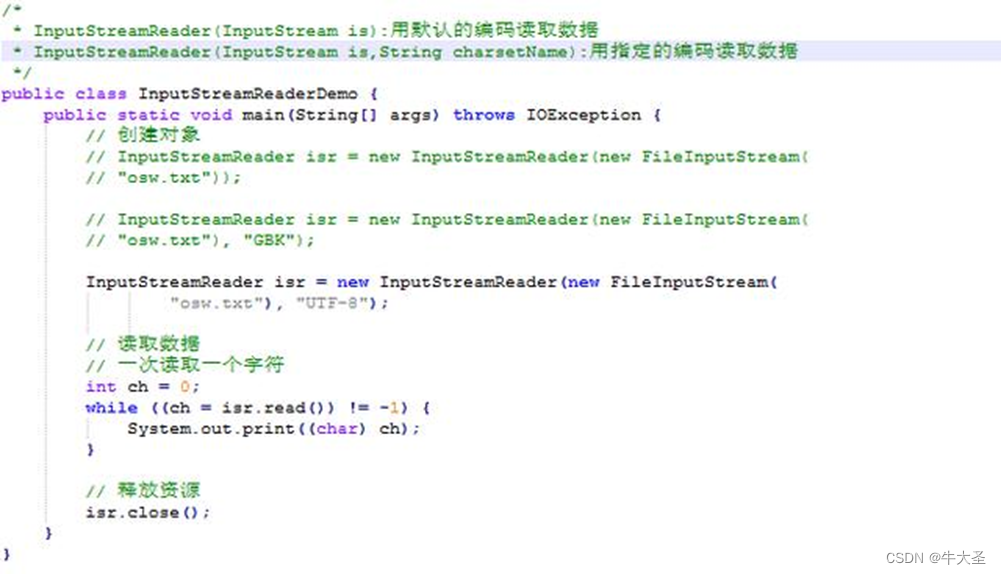
C: 编码问题其实很简单
编码只要一致即可
键盘输入
Java使用System.in代表键盘输入,这个输入流是InputStream类的实例,键盘输入的内容一般都是文本内容,能否使用某种方法将其转化成字符输入流?答案是肯定的:InputStreamReader
假设有这样的需求:使用一个输入字符缓冲流读取用户在命令行输入的一行数据。
分析这个需求,首先得知需要用输入字符缓冲流读取数据,我们想到了使用刚才学习的BufferedReader这个类。需要获取的是用户在命令行输入的一行数据,通过之前的学习我们知道,System.in是InputStream类(字节输入流)的静态对象,可以从命令行读取数据字节。现在问题出现了,需要把一个字节流转换成一个字符流,我们可以使用InputStreamReader和OutputStreamWriter这两个类来进行转换
输入一句话到控制台
//记住,只要一读取键盘录入,就用这句话。
BufferedReader bufr = new BufferedReader(new InputStreamReader(System.in));
BufferedWriter bufw = new BufferedWriter(new OutputStreamWriter(System.out));//输出到控制台
String line = null;
while((line=bufr.readLine())!=null){if("over".equals(line))break;bufw.write(line.toUpperCase());//将输入的字符转成大写字符输出bufw.newLine();bufw.flush();}
bufw.close();
bufr.close();
import java.io.*;public class StreamToReaderTest {public static void main(String[] args) {//以不变应万变。。。。。。。//假设有这样的需求:使用一个输入字符缓冲流读取用户在命令行输入的一行数据。//分析这个需求,首先得知需要用输入字符缓冲流读取数据,//我们想到了使用刚才学习的BufferedReader这个类。//需要获取的是用户在命令行输入的一行数据,通过之前的学习我们知道,//System.in是InputStream类(字节输入流)的静态对象,可以从命令行读取数据字节。//现在问题出现了,需要把一个字节流转换成一个字符流,我们可以使用InputStreamReader//和OutputStreamWriter这两个类来进行转换BufferedReader reader = null;try {reader = new BufferedReader(new InputStreamReader(System.in));System.out.print("请输入你今天最想说的话:");String words = reader.readLine();System.err.println(words);} catch (IOException e) {System.out.println(e.getMessage());} finally {if (reader != null) {try {reader.close();} catch (IOException e) {e.printStackTrace();}}}}
}
输入一句话存到一个文档里
import java.io.*;public class InputStreamReader1 {public static void main(String[] args) {//TODO 输入一句话存到一个文档里BufferedReader Reader = null;BufferedWriter Writer = null;try {Reader = new BufferedReader(new InputStreamReader(System.in));System.out.println("请输入一句话");FileWriter fileWriter=new FileWriter("F:/ 情人.txt");Writer = new BufferedWriter(fileWriter);String validBufferLength = Reader.readLine();Writer.write(validBufferLength);Writer.flush();} catch (FileNotFoundException e) {e.printStackTrace();} catch (IOException e) {e.printStackTrace();} finally {if (Reader != null) {try {Reader.close();} catch (IOException e) {e.printStackTrace();}}if (Writer != null) {try {Writer.close();} catch (IOException e) {e.printStackTrace();}}}}
}
IO流之内存操作流
(1)有些时候我们操作完毕后,未必需要产生一个文件,就可以使用内存操作流。
(2)三种
A: ByteArrayInputStream:源:内存 ByteArrayOutputStream:目的:内存。
这两个流对象不涉及底层资源调用,操作的都是内存中数组,所以不需要关闭。
直接操作字节数组就可以了,为什么还要把数组封装到流对象中呢?因为数组本身没有方法,只有一个length属性。为了便于数组的操作,将数组进行封装,对外提供方法操作数组中的元素。
对于数组元素操作无非两种操作:设置(写)和获取(读),而这两操作正好对应流的读写操作。这两个对象就是使用了流的读写思想来操作数组。
- B:CharArrayReader,CharArrayWriter
- C:StringReader,StringWriter

IO流之标准输入输出流
(1)System类下面有这样的两个字段
in 标准输入流
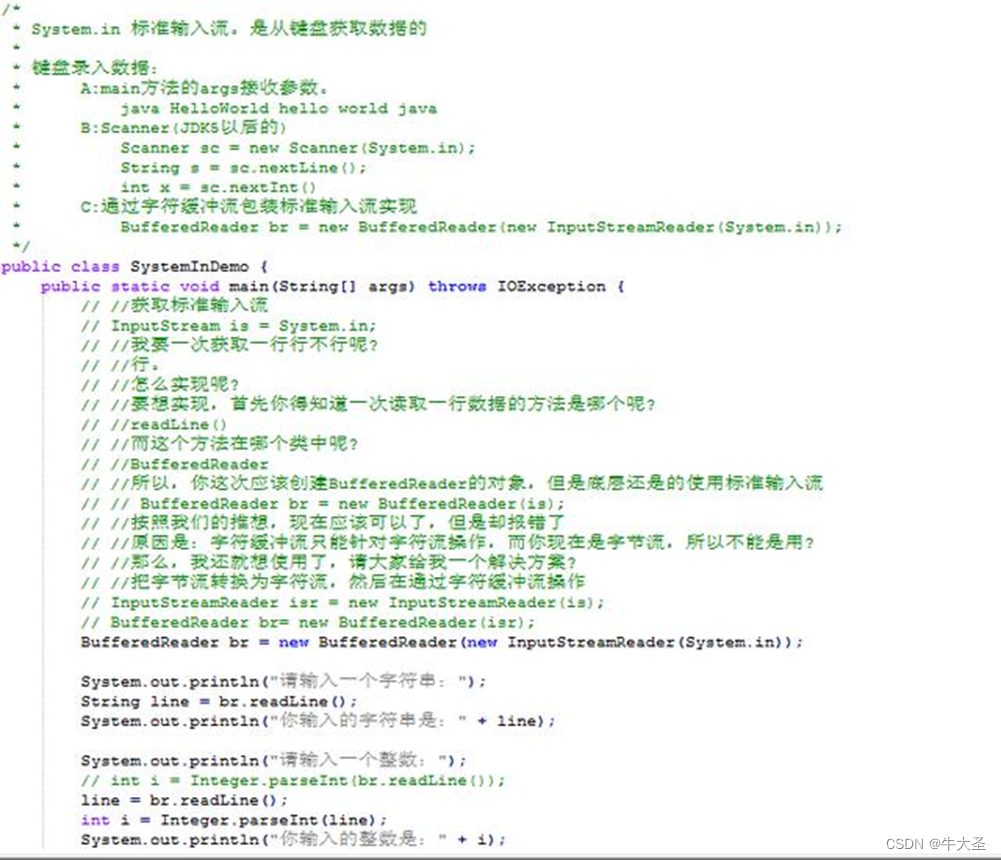
out 标准输出流

(2)三种键盘录入方式
A:main方法的args接收参数
B:System.in通过BufferedReader进行包装
BufferedReader br = new BufferedReader(new InputStreamReader(System.in));
C:Scanner
Scanner sc = new Scanner(System.in);
(3)输出语句的原理和如何使用字符流输出数据
A:原理
System.out.println("helloworld");
PrintStream ps = System.out;
ps.println("helloworld");
B:把System.out用字符缓冲流包装一下使用
BufferedWriter bw = new BufferedWriter(new OutputStreamWriter(System.out));IO流之随机访问流RandomAccessFile:
(1)可以按照文件指针的位置写数据和读数据。
特点:
1:该对象即可读取,又可写入。
2:该对象中的定义了一个大型的byte数组,通过定义指针来操作这个数组。
3:可以通过该对象的getFilePointer()获取指针的位置,通过seek()方法设置指针的位置。
4:该对象操作的源和目的必须是文件。
5:其实该对象内部封装了字节读取流和字节写入流。注意:实现随机访问,最好是数据有规律。
class RandomAccessFileDemo{public static void main(String[] args) throws IOException{write();read();randomWrite();}//随机写入数据,可以实现已有数据的修改。public static void randomWrite()throws IOException{RandomAccessFile raf = new RandomAccessFile("random.txt","rw");raf.seek(8*4);System.out.println("pos :"+raf.getFilePointer());raf.write("王武".getBytes());raf.writeInt(102);raf.close();}public static void read()throws IOException{RandomAccessFile raf = new RandomAccessFile("random.txt","r");//只读模式。//指定指针的位置。raf.seek(8*1);//实现随机读取文件中的数据。注意:数据最好有规律。System.out.println("pos1 :"+raf.getFilePointer());byte[] buf = new byte[4];raf.read(buf);String name = new String(buf);int age = raf.readInt();System.out.println(name+"::"+age);System.out.println("pos2 :"+raf.getFilePointer());raf.close();}public static void write()throws IOException{//rw:当这个文件不存在,会创建该文件。当文件已存在,不会创建。所以不会像输出流一样覆盖。RandomAccessFile raf = new RandomAccessFile("random.txt","rw");//rw读写模式//往文件中写入人的基本信息,姓名,年龄。raf.write("张三".getBytes());raf.writeInt(97);raf.close();}
}
IO流之合并流SequenceInputStream:
作用就是将多个读取流合并成一个读取流。实现数据合并。
表示其他输入流的逻辑串联。它从输入流的有序集合开始,并从第一个输入流开始读取,直到到达文件末尾,接着从第二个输入流读取,依次类推,直到到达包含的最后一个输入流的文件末尾为止。
这样做,可以更方便的操作多个读取流,其实这个序列流内部会有一个有序的集合容器,用于存储多个读取流对象。
该对象的构造函数参数是枚举,想要获取枚举,需要有Vector集合,但不高效。需用ArrayList,但ArrayList中没有枚举,只有自己去创建枚举对象。
但是方法怎么实现呢?因为枚举操作的是具体集合中的元素,所以无法具体实现,但是枚举和迭代器是功能一样的,所以,可以用迭代替代枚举。
合并原理:多个读取流对应一个输出流。
切割原理:一个读取流对应多个输出流。


import java.io.*;
import java.util.*;
class SplitFileDemo{private static final String CFG = ".properties";private static final String SP = ".part";public static void main(String[] args) throws IOException{File file = new File("c:\\0.bmp");File dir = new File("c:\\partfiles");meger(dir);}//数据的合并。public static void meger(File dir)throws IOException{if(!(dir.exists() && dir.isDirectory()))throw new RuntimeException("指定的目录不存在,或者不是正确的目录");File[] files = dir.listFiles(new SuffixFilter(CFG));if(files.length==0)throw new RuntimeException("扩展名.proerpties的文件不存在");//获取到配置文件File config = files[0];//获取配置文件的信息。Properties prop = new Properties();FileInputStream fis = new FileInputStream(config);prop.load(fis);String fileName = prop.getProperty("filename");int partcount = Integer.parseInt(prop.getProperty("partcount"));//--------------------------File[] partFiles = dir.listFiles(new SuffixFilter(SP));if(partFiles.length!=partcount)throw new RuntimeException("缺少碎片文件");//---------------------ArrayList<FileInputStream> al = new ArrayList<FileInputStream>();for(int x=0; x<partcount; x++){al.add(new FileInputStream(new File(dir,x+SP)));}Enumeration<FileInputStream> en = Collections.enumeration(al);SequenceInputStream sis = new SequenceInputStream(en);File file = new File(dir,fileName);FileOutputStream fos = new FileOutputStream(file);byte[] buf = new byte[1024];int len = 0;while((len=sis.read(buf))!=-1){fos.write(buf,0,len);}fos.close();sis.close();}//带有配置信息的数据切割。public static void splitFile(File file)throws IOException{//用一个读取流和文件关联。FileInputStream fis = new FileInputStream(file);//创建目的地。因为有多个。所以先创建引用。FileOutputStream fos = null;//指定碎片的位置。File dir = new File("c:\\partfiles");if(!dir.exists())dir.mkdir();//碎片文件大小引用。File f = null;byte[] buf = new byte[1024*1024];//因为切割完的文件通常都有规律的。为了简单标记规律使用计数器。int count = 0;int len = 0;while((len=fis.read(buf))!=-1){f = new File(dir,(count++)+".part");fos = new FileOutputStream(f);fos.write(buf,0,len);fos.close();}//碎片文件生成后,还需要定义配置文件记录生成的碎片文件个数。以及被切割文件的名称。//定义简单的键值信息,可是用Properties。String filename = file.getName();Properties prop = new Properties();prop.setProperty("filename",filename);prop.setProperty("partcount",count+"");File config = new File(dir,count+".properties");fos = new FileOutputStream(config);prop.store(fos,"");fos.close();fis.close();}
}
class SuffixFilter implements FileFilter{private String suffix;SuffixFilter(String suffix){this.suffix = suffix;}public boolean accept(File file){return file.getName().endsWith(suffix);}
}
以下介绍IO包中扩展功能的流对象:基本都是装饰设计模式。
IO流之管道流:管道读取流和管道写入流可以像管道一样对接上,管道读取流就可以读取管道写入流写入的数据。
注意:需要加入多线程技术,因为单线程,先执行read,会发生死锁,因为read方法是阻塞式的,没有数据的read方法会让线程等待
public static void main(String[] args) throws IOException{PipedInputStream pipin = new PipedInputStream();PipedOutputStream pipout = new PipedOutputStream();pipin.connect(pipout);new Thread(new Input(pipin)).start();new Thread(new Output(pipout)).start();
}
IO流之对象的序列化:
目的:将一个具体的对象进行持久化,写入到硬盘上。
注意:静态数据不能被序列化,因为静态数据不在堆内存中,是存储在静态方法区中。
如何将非静态的数据不进行序列化?用transient 关键字修饰此变量即可。
Serializable:用于启动对象的序列化功能,可以强制让指定类具备序列化功能,该接口中没有成员,这是一个标记接口。这个标记接口用于给序列化类提供UID。这个uid是依据类中的成员的数字签名进行运行获取的。如果不需要自动获取一个uid,可以在类中,手动指定一个名称为serialVersionUID id号。依据编译器的不同,或者对信息的高度敏感性。最好每一个序列化的类都进行手动显示的UID的指定。
import java.io.*;
class ObjectStreamDemo {public static void main(String[] args) throws Exception{writeObj();readObj();}public static void readObj()throws Exception{ObjectInputStream ois = new ObjectInputStream(new FileInputStream("obj.txt"));Object obj = ois.readObject();//读取一个对象。System.out.println(obj.toString());}public static void writeObj()throws IOException{ObjectOutputStream oos = new ObjectOutputStream(new FileOutputStream("obj.txt"));oos.writeObject(new Person("lisi",25)); //写入一个对象。oos.close();}
}
class Person implements Serializable{private static final long serialVersionUID = 42L;private transient String name;//用transient修饰后name将不会进行序列化public int age;Person(String name,int age){this.name = name;this.age = age;}public String toString(){return name+"::"+age;}
}

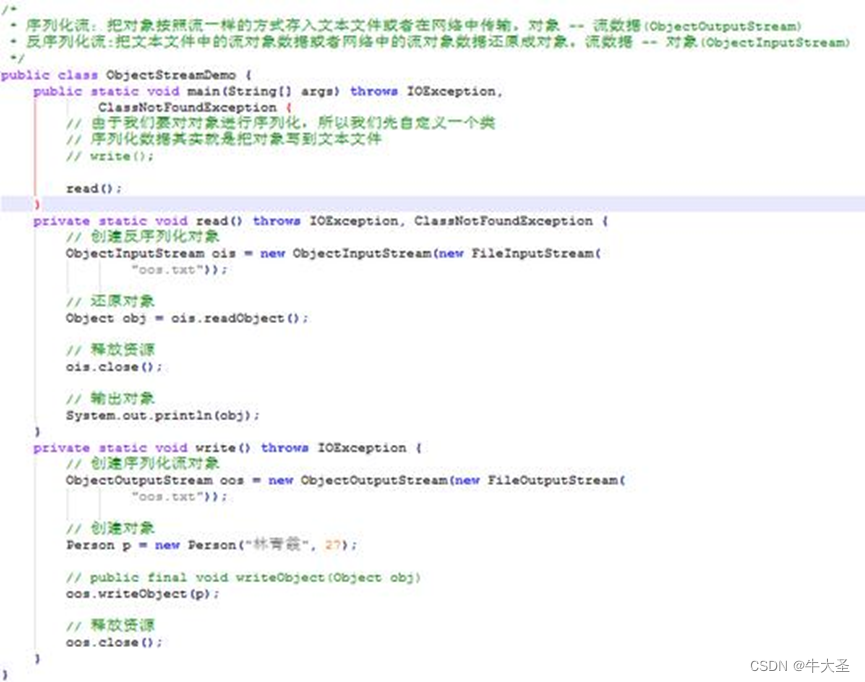
IO流之Properties
Java.util.Properties:
一个可以将键值进行持久化存储的对象。Map--Hashtable的子类。
Map
|--Hashtable
|--Properties:用于属性配置文件,键和值都是字符串类型。
特点:1:可以持久化存储数据。2:键值都是字符串。3:一般用于配置文件。
|-- load():将流中的数据加载进集合。
原理:其实就是将读取流和指定文件相关联,并读取一行数据,因为数据是规则的key=value,所以获取一行后,通过 = 对该行数据进行切割,左边就是键,右边就是值,将键、值存储到properties集合中。
|-- store():写入各个项后,刷新输出流。
|-- list():将集合的键值数据列出到指定的目的地。
(1)是一个集合类,Hashtable的子类

(2)特有功能
A:public Object setProperty(String key,String value)
B:public String getProperty(String key)
C:public Set<String> stringPropertyNames()

(3)和IO流结合的方法
把键值对形式的文本文件内容加载到集合中
public void load(Reader reader)
public void load(InputStream inStream)
把集合中的数据存储到文本文件中
public void store(Writer writer,String comments)
public void store(OutputStream out,String comments)

(4)案例:
A:根据给定的文件判断是否有键为"lisi"的,如果有就修改其值为100

B:写一个程序实现控制猜数字小游戏程序不能玩超过5次


.properties配置文件
key-value类型的配置文件:
password=123456
id=dean
读取配置文件
import java.io.FileInputStream;
import java.io.IOException;
import java.io.InputStream;
import java.util.Properties;public class LoadSample { private static Properties properties = null;static {InputStream fis = null;properties = new Properties();try {//反射
// fis = LoadSample.class.getClassLoader().getResourceAsStream("app.properties");//读取指定文件夹fis = new FileInputStream("conf/app.properties");//properties路径properties.load(fis);properties.list(System.out); } catch (IOException e) {} finally {if (fis != null) {try {fis.close();} catch (IOException e) {}}}}public static String getProperty(String key) {return properties.getProperty(key);}public static void main(String args[]) throws Exception { System.out.println("\nThe foo property: " + LoadSample.getProperty("id")); }
}
内存写入配置文件
//通过list 方法将Properties写入Properties文件,会将文件中的全部覆盖
import java.io.IOException;
import java.io.File;
import java.io.FileInputStream;
import java.io.PrintStream;
import java.util.Properties;public class Test {public static void main(String[] args) {Properties p = new Properties();p.setProperty("id","dean");p.setProperty("password","123456");try{PrintStream fW = new PrintStream(new File("conf/app.properties"));p.list(fW );System.out.println("jieshu");} catch (IOException e) {e.printStackTrace();}}
}
XML方法:
Xml文件
<?xml version="1.0" encoding="UTF-8"?>
<!DOCTYPE properties SYSTEM "http://java.sun.com/dtd/properties.dtd">
<properties> <comment>Hi</comment> <entry key="foo">bar</entry> <entry key="fu">baz</entry>
</properties>
读取配置文件
import java.io.FileInputStream;
import java.io.IOException;
import java.io.InputStream;
import java.util.Properties;public class LoadSampleXML { private static Properties properties = null;static {InputStream fis = null;properties = new Properties();try {//反射
// fis = LoadSample.class.getClassLoader().getResourceAsStream("NewFile.xml");//读取指定文件夹fis = new FileInputStream("conf/NewFile.xml");//properties路径properties.load(fis);properties.list(System.out); } catch (IOException e) {} finally {if (fis != null) {try {fis.close();} catch (IOException e) {}}}}public static String getProperty(String key) {return properties.getProperty(key);}public static void main(String args[]) throws Exception { System.out.println("\nThe foo property: " + LoadSample.getProperty("id")); }
}
内存写入配置文件
import java.io.IOException;
import java.io.File;
import java.io.FileInputStream;
import java.io.PrintStream;
import java.util.Properties;public class TestXml {public static void main(String[] args) {Properties p = new Properties();p.setProperty("id","dean");p.setProperty("password","123456");try{PrintStream fW = new PrintStream(new File("NewFile.xml"));p.storeToXML(fW,"test");System.out.println("结束");} catch (IOException e) {e.printStackTrace();}}
}
递归:
就是函数自身调用自身。
什么时候用递归呢?
当一个功能被重复使用,而每一次使用该功能时的参数不确定,都由上次的功能元素结果来确定。
简单说:功能内部又用到该功能,但是传递的参数值不确定。(每次功能参与运算的未知内容不确定)。
递归的注意事项:
1:一定要定义递归的条件。
2:递归的次数不要过多。容易出现 StackOverflowError 栈内存溢出错误。
其实递归就是在栈内存中不断的加载同一个函数。
A:要有出口,否则就是死递归
B:次数不能过多,否则内存溢出
C:构造方法不能递归使用
(3)递归的案例:
A:递归求阶乘

B:兔子问题

C:递归输出指定目录下所有指定后缀名的文件绝对路径

D:递归删除带内容的目录(小心使用)
